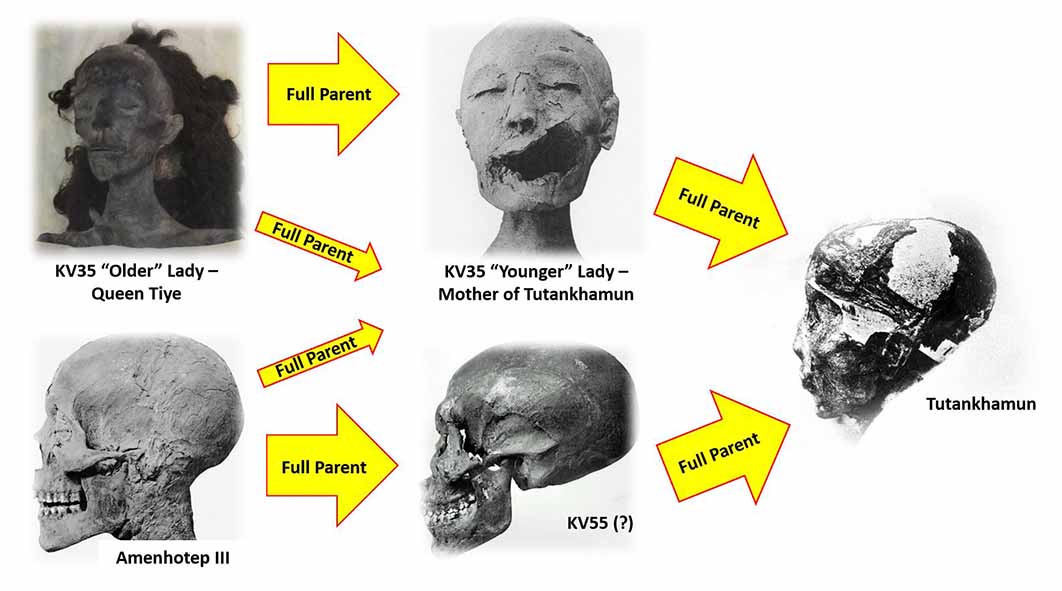
The Tut Is Not My Son!
It could be quite the talk show: Who is King Tut’s real father? The host would be handed an envelope with the paternity test results. The audience hushes, clutching their seats, biting their nails. Who could be the dad? Was it rebel bad boy Akhenaten? Or his younger brother, the shadowy Smenkhkare? Or was it the elderly Amenhotep III, their father?

Reconstructed family tree of Tutankhmaun, based on the conclusions reached by Zahi Hawass et al in 2010 (Image: Courtesy Jonathon Perrin)
At present, there is no definitive answer to this all-important question. The evidence for each candidate includes mummies and their DNA, plus inscriptions on artifacts and tombs. Unfortunately, this evidence is frustratingly incomplete and riddled with lacunae – thereby leaving room for many interpretations. The current author has reconstructed a timeline of this turbulent period in Egypt’s past, showing its multiple co-regencies of different pharaohs, and that Tutankhamun was likely born circa 1345 BC, during the height of the Amarna Age. This is the most likely pharaonic succession based on the available evidence as of 2023. An important feature of this period was the co-regency, with two pharaohs ruling simultaneously, likely one in Amarna and the other in Thebes. It indicates that any of the three pharaohs could have been Tut’s father.

Reconstructed timeline of the Pre-Amarna, Amarna, and Post-Amarna periods in Egypt’s 14th century BC, the country’s most politically and religiously turbulent time. (Image: Courtesy Jonathon Perrin)
Amenhotep III – Paternity or Propaganda?
Perhaps the most obvious answer of who the father of Tutankhamun was, should be Amenhotep III. This is because there exist actual texts that state exactly that. For example, Amenhotep III commissioned two colossal red granite lion statues to be carved and placed at his temple far in the south of Egypt at Soleb. Later, Tutankhamun had a section of text added to the statues in which he explicitly calls Amenhotep III his father.

One of two colossal granite lions of Amenhotep III, commissioned by the pharaoh for his temple of Soleb in Upper Nubia. British Museum (Image: Courtesy Jonathon Perrin)
The added text reads as follows: “May the gods grant peace to the King of Upper and Lower Egypt … Nebkheperure Tutankhamun, who renewed the monument of his father, the King of Upper and Lower Egypt … Nebma’atre Amenhotep (III)”. From the famous Great Colonnade at Luxor Temple come numerous renewal inscriptions which link Tutankhamun to Amenhotep III as his father. According to Murnane (1995): “It is still in dispute whether Tutankhamun claims Amenhotep III literally as his father or uses the term metaphorically for ancestor.” Here Tutankhamun describes how he renewed Luxor Temple, first constructed by Amenhotep III and then left in ruin under Akhenaten: “He restored Luxor anew … as does a son who is effective on behalf of his father, Amenhotep (III).”




